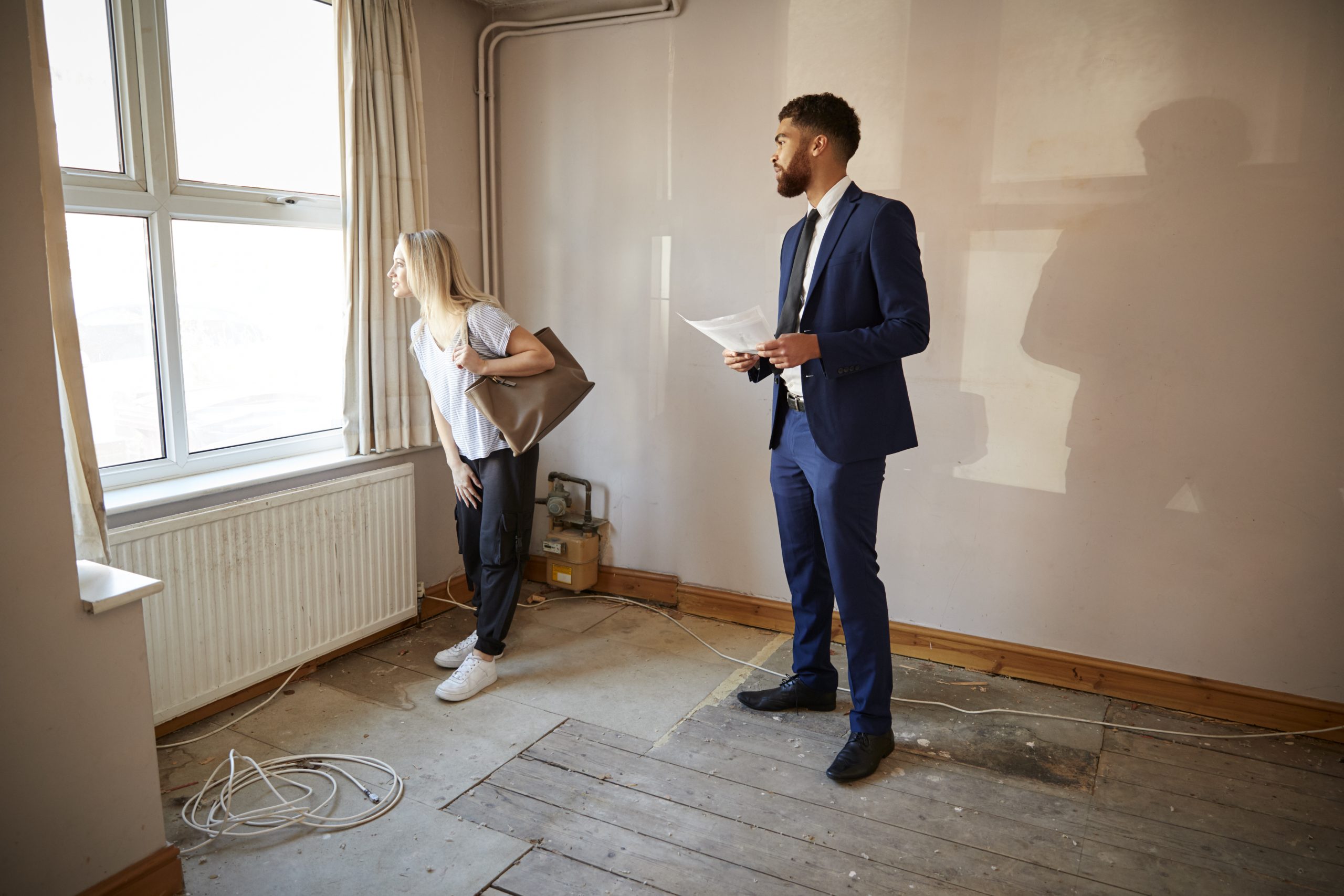Office Building Assessment Checklist: What You Should Expect
An office building assessment is an important step that helps property owners, managers, and tenants maintain a safe and functional environment. It involves a thorough inspection of the building’s structural, electrical, and mechanical systems, ensuring everything is in good condition and meets safety standards. Whether you’re looking to buy, lease, or manage an office space, understanding the assessment process is key to preventing costly repairs and ensuring a smooth operation.
This assessment typically covers a range of critical areas, from the foundation and roofing to electrical wiring and plumbing. By identifying potential issues early on, you can address problems before they escalate, saving time and money in the long run. Regular office building assessments are also essential for complying with local regulations, maintaining energy efficiency, and ensuring the safety of everyone who uses the space.
In this article, we will tell you all you need to know about an office complex assessment checklist, explaining what you should expect during the process. From checking structural integrity to reviewing fire safety systems, this guide will give you a clear understanding of what to look for and how to keep your building in top shape. By following this checklist, you can ensure your office building remains safe, efficient, and valuable for years to come.
Key Areas Of An Office Building Assessment
An office complex assessment involves inspecting several key areas that impact the safety, functionality, and overall value of the property. Each of these areas play an imortant role in ensuring the building is suitable for use and complies with current regulations. Below are the primary areas covered during a standard office structure assessment:
- Structural Integrity: The foundation, walls, and load-bearing structures are thoroughly inspected for any signs of damage, cracks, or shifts. Ensuring the building’s structure is sound is essential to avoid costly repairs and potential safety hazards. Structural issues, such as subsidence, can severely affect the stability of the building.
- Roofing: The roof is one of the most critical parts of the building. The inspection will check for leaks, missing or damaged tiles, and signs of wear that could lead to water damage. A well-maintained roof protects the building from the elements and prevents internal damage to walls and ceilings.
- Electrical Systems: Inspectors will examine the wiring, electrical panels, outlets, and lighting systems to ensure they are functioning properly and comply with safety regulations. Outdated or faulty wiring can pose serious fire risks, so ensuring the electrical system is in top condition is a priority.
- Plumbing and Drainage: The plumbing system is inspected for leaks, blockages, and signs of corrosion in pipes. Ensuring the water pressure is adequate and the drainage system is functioning correctly is important for the comfort and safety of the building’s occupants.
- Fire Safety: Fire alarms, sprinklers, and emergency exits are checked to ensure they meet local fire safety regulations. Having a well-maintained fire safety system is essential for protecting both property and people.
These key areas form the backbone of any office building checks, ensuring the building is safe, efficient, and compliant with regulations.

Office Building Assessment Checklist
To ensure your office building check is thorough and leaves no stone unturned, inspectors follow a detailed checklist that covers all critical areas of the building. Here’s what you can expect to be included in the assessment checklist:
- Exterior and Foundation:
- Inspect the foundation for cracks, uneven settling, or signs of subsidence.
- Check the exterior walls for cracks, leaks, and signs of weather damage.
- Assess the condition of windows and doors to ensure proper sealing and energy efficiency.
- Roof and Guttering:
- Examine the roof for missing or damaged tiles, leaks, and areas of water pooling.
- Inspect the gutters and downspouts for blockages or damage that could cause water damage to the building.
- Ensure that roofing insulation is adequate and that there are no ventilation issues.
- Interior Spaces:
- Inspect walls, ceilings, and floors for cracks, dampness, or mould, which could indicate deeper problems.
- Check for adequate insulation to ensure energy efficiency and comfort within the building.
- Inspect stairways, corridors, and office spaces for safety hazards such as loose handrails or uneven flooring.
- Electrical Systems:
- Ensure that all wiring is up to date and meets safety standards.
- Test electrical outlets and switches to confirm they are functioning correctly.
- Examine lighting systems, including emergency lighting, to ensure they are operational.
- Plumbing and Drainage:
- Check for leaks, water pressure issues, and any signs of corroded or damaged pipes.
- Inspect toilets, sinks, and drainage systems for proper function and hygiene standards.
- Ensure that hot water systems and boilers are working efficiently and safely.
- Fire Safety and Emergency Systems:
- Inspect fire alarms, smoke detectors, and sprinkler systems for proper function and compliance with local fire safety codes.
- Ensure that fire extinguishers are accessible, regularly maintained, and up to date.
- Check that emergency exits and escape routes are clearly marked and accessible in the event of an emergency.
By following this checklist, you can ensure that your office building assessment covers all the necessary areas and provides a comprehensive overview of the building’s current condition. This checklist is essential for maintaining the safety, efficiency, and longevity of your office building.
The Importance Of Regular Office Complex Assessments
Conducting regular office building or complex assessments is important for maintaining a safe, efficient, and well-functioning workplace. Over time, buildings experience wear and tear, and if small issues are not addressed early, they can escalate into much larger, more costly problems. Regular assessments help identify and resolve issues before they become severe, saving both time and money in the long run.
One of the primary benefits of regular assessments is preventing costly repairs. For instance, a minor leak in the roof may seem insignificant at first, but if left untreated, it could lead to water damage, mould growth, and even structural damage. By catching these issues early through routine assessments, property owners can address them promptly, preventing more expensive repairs or renovations down the line.
Safety compliance is another critical reason to schedule regular assessments. Health and safety regulations evolve over time, and failing to keep up with these changes can result in fines or, worse, unsafe working conditions for employees. Regular office building assessments ensure that fire safety systems, electrical wiring, and structural components are in line with current safety standards. This not only protects the occupants but also shields the property owner from legal and financial risks.
Energy efficiency is another area where regular assessments can have a significant impact. Ageing HVAC systems, poor insulation, and outdated windows can all contribute to higher energy costs. Routine inspections of these systems can identify inefficiencies, enabling building owners to make upgrades that improve energy performance, lower utility bills, and reduce the building’s carbon footprint.
Regular office building or complex assessments are essential for maintaining property value. Well-maintained properties are more attractive to potential buyers or tenants and tend to retain their value better than neglected buildings. On the other hand, buildings that have been left unchecked may suffer from a decline in value due to accumulated maintenance issues and safety concerns.
Regular assessments are an essential part of maintaining a safe, compliant, and valuable property. By addressing small issues early and ensuring compliance with safety standards, you can protect your investment and create a better environment for building occupants.
What To Expect From Your Office Building Assessment Report
Once the assessment is complete, you’ll receive a detailed report outlining the findings. This report provides a comprehensive overview of the building’s condition and includes recommendations for any necessary repairs or improvements. Understanding what’s included in the report is important for making informed decisions about the future of your building, whether you need to address urgent safety concerns or plan for long-term maintenance.
The report will usually begin with an overview of the building’s structural integrity. Any cracks, subsidence, or foundation issues will be highlighted here, along with recommendations for addressing these problems. Structural issues can vary in severity, and while minor cracks may simply require monitoring, more serious damage could necessitate significant repairs or reinforcement.
Next, the report will cover the roofing and external areas. The assessment will note any signs of damage, such as missing tiles, leaks, or blocked gutters. If problems are found, the report will outline potential solutions, such as roof repairs or gutter cleaning. Addressing these issues promptly can prevent water damage, which could lead to more extensive problems down the line.
The electrical system section will highlight any concerns regarding the wiring, fuse boxes, outlets, and lighting. The report will indicate whether the electrical system is up to code and functioning safely. If any issues are found, such as outdated wiring or faulty circuits, recommendations for repairs or upgrades will be provided. Electrical safety is critical, as problems in this area can lead to fires or other hazards if left unattended.
The report will also detail the condition of the plumbing and drainage systems. Any leaks, blockages, or inefficiencies in water pressure will be noted, along with suggestions for improving the system’s performance. Plumbing issues can disrupt the daily operations of a business and, if ignored, can lead to more costly repairs, so it’s important to take any recommendations seriously.
Another key component of the report will be the fire safety systems. This section will assess the condition and compliance of fire alarms, sprinklers, emergency exits, and fire extinguishers. The report will make recommendations for upgrades or repairs if any aspect of the fire safety system is found to be lacking. Ensuring compliance with fire safety regulations is not only a legal requirement but also essential for the safety of everyone in the building.
In addition to these specific areas, the report may include a section on energy efficiency, particularly regarding the HVAC systems and insulation. If the building is not energy-efficient, recommendations for improvements will be made, which can help reduce utility costs and improve the overall comfort of the workspace.
The office building assessment report provides valuable insights into the current state of the property and helps guide decisions on repairs, upgrades, and future maintenance. It’s an important tool for ensuring the building remains safe, compliant, and efficient.
Keep Your Office Building In Top Shape With Regular Assessments
Maintaining the safety, efficiency, and long-term value of your property starts with regular office building assessments. These assessments provide a detailed understanding of your building’s condition, allowing you to address minor issues before they become costly problems. From checking the structural integrity to ensuring compliance with safety regulations, these evaluations are essential for protecting your investment and ensuring a safe environment for all occupants.
At HICH Roof and Property Consultants, we offer comprehensive office complex or building assessments tailored to meet your specific needs. Our expert team will provide a thorough report, guiding you through every step of the process. Whether it’s structural repairs, electrical upgrades, or improving energy efficiency, we are here to ensure your office building stays in optimal condition.
Don’t wait for issues to escalate—schedule your office building assessment today to safeguard your property and ensure its long-term value. Call us now on 0345 257 0858 or send us a Whatsapp message on 07725 317 177 now to book an appointment with our experienced surveyors and take the first step in keeping your building in top shape.








